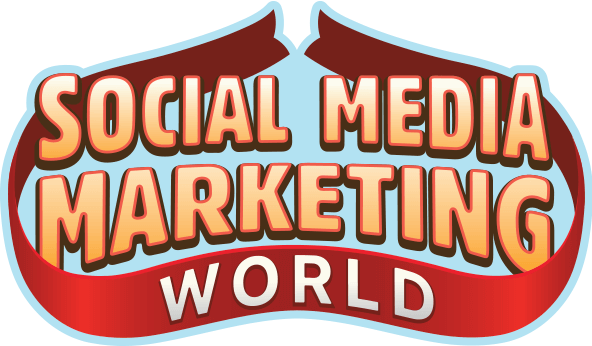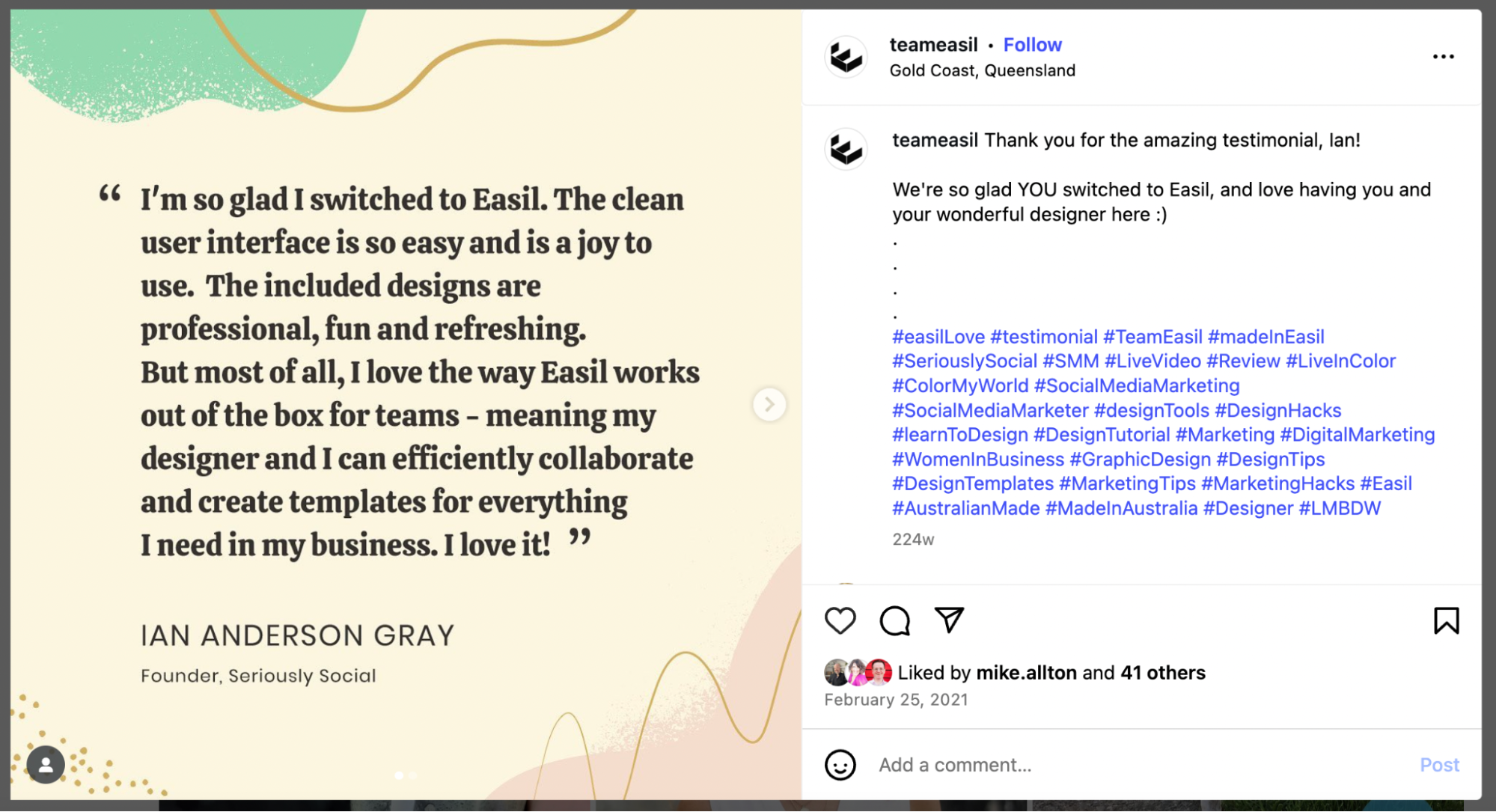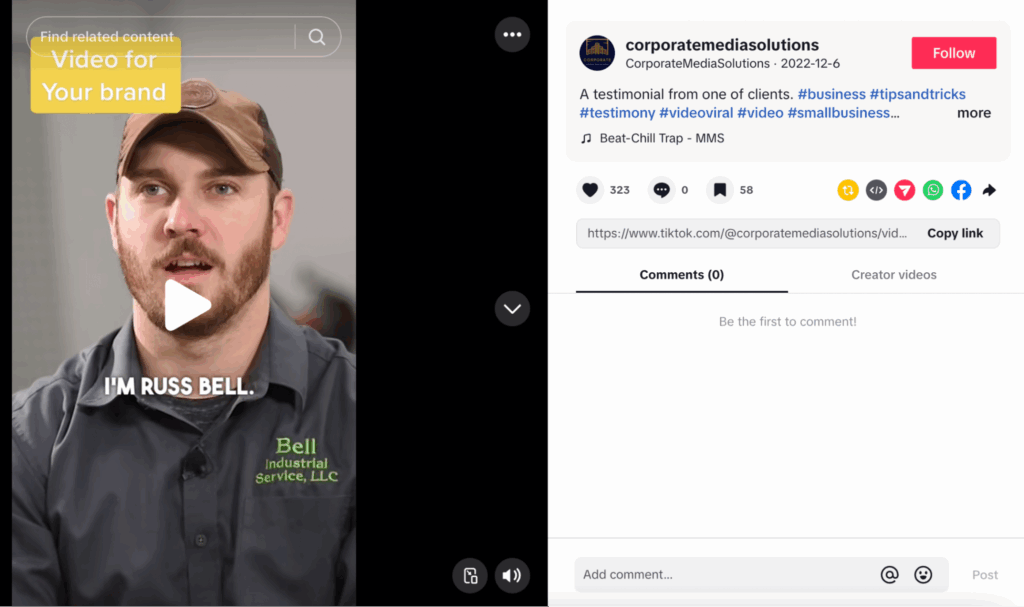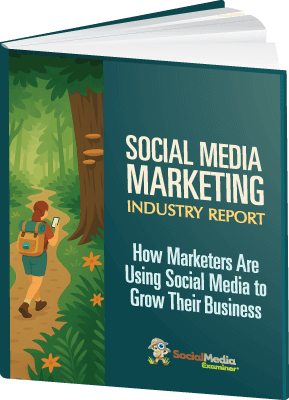Are you struggling to create marketing content that not only resonates but drives real business results? Wondering how to transform customer wins into compelling proof that influences buyers at every stage of their journey?
Customer stories are one of the most versatile and high-impact marketing assets available to modern marketers.
In this article, you’ll discover a proven framework for turning a single customer interview into a complete, multi-format content campaign — helping you attract leads, close deals, and strengthen client relationships with authentic, trust-building narratives.

Why Customer Stories Matter More Than Ever for Marketers
Customer stories represent one of the most versatile and impactful marketing assets marketers can use today. Unlike other content types that serve a single purpose, customer stories can be deployed across the entire buyer's journey with remarkable effectiveness.
Today, people naturally trust what their peers say more than any marketing message you could craft. This makes customer stories particularly valuable in an economy where marketing teams are being asked to do more with fewer resources.
One great customer story can be transformed into a whole ecosystem of content that serves multiple business objectives. This content can help you with lead generation, customer onboarding, upselling existing clients, and improving retention rates.
From a competitive standpoint, customer stories provide unique protection for your business. While competitors can steal your branding, copy your messaging, and even poach your people, the specific successes you've driven for clients belong to you alone. These achievements represent proof that can't be replicated by others.
And in cutthroat industries, the company with the most proof wins. The organization that can point to their ability to predictably drive outcomes their audience cares about gains a massive advantage in the marketplace.
Customer stories also break through the bias that these assets only work at the end of the buyer's journey. Many marketers incorrectly assume stories are something you deploy when someone is already close to buying. The reality is that well-crafted customer stories can effectively influence prospects at every stage of their decision-making process.
#1: What You Need to Consider Before Building Customer Success Stories
Customer stories are inherently challenging to create and will always present obstacles. Anytime you bring customers into your marketing efforts and coordinate multiple stakeholders who need to approve content, complications will arise.
Understanding that difficulty doesn't diminish value is crucial. Just because customer stories require process, time, and energy doesn't mean you should avoid them or preemptively assume your customers won't participate. Multi-billion dollar companies and small businesses alike struggle with this same challenge.
The most important mindset shift involves recognizing that customer stories are fundamentally a team sport. You cannot simply assign this responsibility to marketing and hope for success.
Everyone in your organization plays a role, from setting initial expectations with customers to delivering exceptional service, making the request, capturing the story, and promoting the final content.
In larger organizations, marketing will depend on sales teams and leadership to set the proper tone and communicate that customer story participation is a company priority. This collaborative approach extends beyond isolated department efforts.
Ready to Supercharge Your Marketing Strategy?

Get expert training and an unbeatable conference experience when you attend Social Media Marketing World—from your friends at Social Media Examiner.
Broaden your reach, skyrocket your engagement, and grow your sales. Become the marketing hero your company or clients need!
🔥 Save $800 on an All-Access ticket. Sale Ends Friday! 🔥
GET THE DETAILSCustomer stories also require ongoing commitment rather than one-time execution. Your customers aren't uniform in their needs, challenges, or desired outcomes. While there's significant overlap among your customer base, each client comes with specific pains they want to be solved, expectations they want to be met, and results they hope to achieve.
When you examine the intersection of these various customer motivations, concerns, and objectives, you discover that you can never really have enough customer stories. Every customer, not just your largest accounts, can speak to particular objections, concerns, or goals that different prospects experience.
Finally, customer stories deserve strategic planning rather than rushed execution. You shouldn't simply reach out asking who can go on record or focus only on big-name clients. Instead, you need to think carefully about your specific goals, the key performance indicators you need to move, and the audiences you need to influence to achieve those metrics.
The people you need to influence should become the focus of your stories. What these target audiences need to hear should determine the content of your stories and guide the questions you ask during customer interviews. Success comes from crafting intentional strategies around the KPIs you want to move, the people you want to influence, and the business goals you have.
#2: 5 Types of Customer Stories to Use In Your Marketing
Not every customer story follows the same format or serves the same purpose. Understanding various story types helps you match the right narrative approach to your specific business objectives.
Switcher Stories: Switcher stories focus on customers who moved from a competitor's solution to yours. These narratives are particularly valuable when you're competing directly against established players in your market. The key elements to capture include why they made the switch, what prompted the decision, and what made your solution the right choice.
These stories prove especially powerful because they address prospects who are inevitably considering similar transitions. Rather than relying on feature comparison charts, switcher stories provide real-world evidence from someone who has experienced both solutions.

Disambiguator Stories: Disambiguator stories help translate your value proposition when entering new markets or appealing to different roles. These narratives take successful implementations from existing markets and make them relevant to new audiences who may not speak the same language or prioritize the same outcomes.
A practical example involves an industrial air filtration company that traditionally served fiberglass manufacturing clients. When COVID created opportunities in the gym market, they needed to translate their compliance-focused messaging into peace-of-mind benefits that gym owners cared about. The same technology that helped manufacturers meet regulatory requirements could help fitness centers provide safe environments for their members.
These stories work by taking existing client successes and reframing them in terms that resonate with new market segments. You can use either existing customer stories that happen to serve new markets or translate current stories to show how your value applies to different industries.
Onboarding and Implementation Stories: Many companies wait until the entire customer relationship has run its course before creating stories. However, for organizations where getting implemented or installed presents challenges for prospects, the onboarding process itself becomes compelling story material.
Implementation stories focus specifically on successful installations, smooth transitions, or effective onboarding experiences. Prospects often worry about the complexity of switching solutions or integrating new systems. Reading about other successful implementations can remove significant barriers to purchase decisions.

Upgrader Stories: Upgrader stories feature customers who decided to move to higher service tiers or premium product levels. These narratives capture why clients made upgrade decisions and how their results improved with enhanced offerings.
These stories serve dual purposes. They can influence new prospects to choose premium options from the start, and they can encourage existing customers to consider upgrades. When current clients read about others achieving better results with premium features, they become more likely to invest in higher-value offerings.
Playbook-Style Stories: Some companies create stories that read more like instructional guides than traditional case studies. Mutiny HQ provides excellent examples of this approach with their customer playbooks. These stories focus on the ingenuity of the client and teach prospects with similar problems how to use your tools to solve challenges.
Rather than positioning your product as the primary solution, playbook stories highlight customer creativity while demonstrating practical applications. They start with clear learning objectives and provide step-by-step insights that prospects can apply to their own situations.

#3: How to Get Customers to Agree to Tell Their Stories
Getting customer agreement represents the point where many marketers get stuck and abandon their story efforts. However, with the right approach, customer participation becomes much more achievable.
Your ability to secure customer participation largely depends on the groundwork you establish long before making any story requests. If you're not already in the habit of discussing outcomes with customers or checking in on their progress, then any story request will feel strange and unusual.
Making outcome conversations normal throughout your customer relationships creates the foundation for successful story requests. Customers need to see that you're genuinely invested in their success rather than just collecting marketing material.
The Six-Sentence Ask Framework for Collecting Customer Stories
Most people making story requests say far too much, sending lengthy emails, or talking for fifteen minutes while getting in their own way. The six-sentence ask provides a concise framework that significantly improves response rates.
Sentence 1: Why Them Specifically
Begin by explaining why you're reaching out to this particular customer rather than making a generic request. Make them feel seen, appreciated, and special by pointing out specific triggers or achievements. This might involve mentioning their recent renewal, a significant win they've experienced, or a successful launch they've completed.
For example: “I'm reaching out to you because we're so excited to see last month's numbers come in, and we're absolutely crushing it on the visibility and goals we set at the beginning of the year.”
Sentence 2: Why Now
Provide a reason for the timing of your request to create momentum. This could be building your customer story library, working on marketing materials, or preparing for an upcoming campaign. Any reason works better than no reason at all.
Sentence 3: What's the Story
This represents the most critical element of your request. Never make blanket asks about participating in “a case study” because it's too easy to decline and provides no useful information if they refuse. Instead, specify exactly what aspects of your relationship or results you want to discuss.
Avoid using the term “case study” because it sounds clinical and intimidating. Instead, use phrases like “customer story” or simply ask, “Can we feature you?” The specific language you choose significantly impacts response rates.
Detail the particular metrics, campaigns, or outcomes you want to highlight. This specificity gives customers something concrete to agree with or object to, changing the entire conversation dynamic. It also helps when customers need to get approval from bosses or legal teams since stakeholders can evaluate specific topics rather than vague participation requests.
Sentence 4: What's Involved
Clearly outline the time commitment and process. Most customers respond well to knowing the exact investment required: “All that's involved is a thirty-minute interview and a chance for you to review the draft before anything goes live.”
Sentence 5: Why Bother
Explain what benefits the customer receives from participation. This doesn't require financial incentives. Benefits might include sharing the story with your follower base, providing valuable backlinks, or shopping the story to media outlets. Focus on whatever strokes their ego, supports their budget, or makes them look good to their superiors.
Sentence 6: What's Next
Provide clear instructions for how interested customers should respond. Use phrasing like “Please let me know if this is something you'd be open-minded to” because everyone wants to appear open-minded, which can improve response rates.
Here's how this framework looks in practice for an SEO agency:
Hey Jake, I'm so excited to see last month's numbers come in. We're absolutely crushing it on the visibility and the goals we set at the beginning of the year. I wanted to ask you if you'd be comfortable being featured in a customer success story because we're building our customer success story library, and I think you'd be a great fit. I'd love to be able to talk about the campaign that we ran around targeting competitor keywords, and I'd love to share that we saw this percent lift in traffic and this percent lift in conversions. All that's involved is a thirty-minute interview and a chance to review the draft before it goes live. We plan to share this with our ten thousand followers on social media, and we're also going to be shopping it around to some outlets. And then, if you're willing, if you're open to being featured, please hit me back with an email. I'm happy to discuss in more detail.
#4: How to Capture Compelling Customer Stories
Once you've secured customer agreement, proper preparation becomes essential for maximizing the value of your interview time. You cannot over-prepare for these conversations because you need to gather comprehensive information in a limited timeframe while respecting your customer's schedule.
AI Is No Longer Optional for Marketers—Ready to Master It?

Join over a thousand forward-thinking marketers at AI Business World—a conference-in-a-conference at Social Media Marketing World.
Get two days of practical AI training where you'll discover:
✅ Systems that 3x your output—leaving time for strategy and creativity
✅ Proven strategies you can deploy right away—no guesswork, no wasted budget
Become the indispensable AI expert your company needs.
GET YOUR TICKETS—SAVE $300Pre-Interview Preparation
Begin by developing your question set around the story outline you already shared with the customer. Since you specified what you hoped to cover in your initial request, craft your questions to explore those particular areas.
Limit yourself to no more than ten planned questions to cover the entire story. This constraint forces you to focus on the most important elements while leaving room for natural conversation flow.
Send customers the specific metrics you want them to discuss in advance. The worst outcome is having customers arrive unprepared with key data, especially if you're recording video content. Give them homework assignments to ensure they can speak knowledgeably about relevant numbers.
If customers seem particularly nervous, you might share a few sample questions to help them feel prepared. However, avoid sending your complete question list unless absolutely required by legal or compliance teams. When customers receive all questions in advance, nervous participants often over-rehearse and sound wooden during actual interviews.
Instead, help customers feel prepared and comfortable without providing a complete script. You want to leave room for serendipity and organic responses that might surprise you with valuable insights.
4 Types of Questions to Ask Customers During the Interview
Focus on open-ended questions that encourage storytelling rather than yes-or-no responses. Several categories of questions consistently produce valuable content.
Situational Context Questions: Start by understanding the customer's situation when they decided to work with you: “What was going on in your business when you decided to work with a company like ours?”
Follow up with emotional and experiential questions: “How did that feel?” “What made that so important to get right?” “What made that so scary?” “What was at stake?” These questions help customers move beyond rehearsed responses into genuine storytelling.
Decision-Making Process Questions: Explore how customers evaluated their options: “When you were evaluating whether or not to work with us, what was on your must-have list?” and “What were your non-negotiables?”
Follow these with questions about confidence and decision factors: “What made you confident that we would be as good or better than the solution you were using previously?” “What turned the tide for you?” “What made you confident this was going to be the right decision?”
Experience and Implementation Questions: Understand their working relationship with you: “Did anything surprise you about working with us?” “What jumped out as notably different from the time we started working together compared to others you'd used in the past?”
Always follow general responses with specific examples: “Can you give me an example of what that looked like in practice?” “Can you remind me of a time when this happened?” These questions move customers from abstract concepts to concrete stories.
Results and Impact Questions: While metrics matter, the impact of those results creates more compelling content. Ask: “What did that make possible for you?” “What can you do now or do better than you could before?” “How did that change things for you, your boss, your business?”
You can ask these impact questions in layers to understand multiple levels of effect. For example, one payroll automation story became compelling when the customer explained: “I no longer have to run across offices on five different floors delivering paychecks.” This quote made the ninety percent efficiency improvement tangible and relatable.
How to Interview Your Customers
Your role during interviews involves transforming customers into storytellers rather than simply reading questions from a list. Maintain an encouraging tone throughout, offering responses like “Great response, thank you” and “That's really helpful” to keep customers comfortable and engaged.
For less articulate customers, use reflecting techniques: “What I hear you say is…” followed by silence. This approach often prompts customers to either correct your interpretation or expand on their thoughts.
Don't hesitate to ask the same question in different ways if initial responses lack depth. Everyone appreciates mulligans, and customers often think about topics differently after hearing them phrased alternatively.
Use phrases like “Tell me more about that” or “What was the thing behind that?” to encourage deeper exploration. Avoid leading questions like “Would you say that…” because they can make customers feel like you're putting words in their mouths.
#5: How to Craft Your Customer Story for Maximum Impact
When creating your story from interview content, begin with the end in mind by staying focused on the strategic plan you developed initially. Don't abandon your original objectives now that you have the raw materials to work with.
Start with distribution planning as you craft content. Begin with your most substantial asset because it's easier to cut down from long-form content than to expand shorter pieces. Getting approval for comprehensive stories also streamlines approval processes for derivative content.
Story Structure and Flow
Every effective customer story needs strong beginning, middle, and end elements, similar to compelling movies. While most stories will include problem-solution-results frameworks, the execution of each section determines impact.
Opening with Action: Jump straight into compelling action rather than boring introductions. Avoid starting with generic company descriptions like “X is a company from X place, and this is what they do.” This approach sounds like a press release and immediately drains energy from your story.
Instead, plunge readers directly into the situation. One cybersecurity story began: “Tom's phone was ringing off the hook, and every indicator light on his fraud dashboard was blinking at once.” This opening sets the stakes, creates urgency, and makes the situation personal by naming the hero.
Make your customer the hero of the story, not your company. Give the hero a name and focus on their experience throughout the narrative.
Solution Section Depth: The middle section should go beyond listing what you did together. Include the why behind decisions and actions, plus the customer's experience throughout the process. For service providers, explain not just what was implemented but why those choices were made and how the customer felt about the process.
For product companies, focus on how customers use specific features rather than just listing capabilities. Show implementation in practice rather than theoretical benefits.
Results with Impact: Move beyond simple metrics to show the broader impact of results. Demonstrate what outcomes made possible for customers, how situations changed, and what they can now accomplish that wasn't possible before.
The goal is to help prospects envision their own experience and feel what they want to feel as part of your process.
Strong Calls to Action: Every customer story needs a specific call to action tailored to the story content. Avoid generic requests like “contact us for a demo.” Instead, connect your CTA directly to the story's main theme.
If your story focused on eliminating a particular pain point, make your call to action about relieving that specific problem: “Do you want to stop feeling overwhelmed by manual processes? Book a demo and we'll show you how.”
You can create seamless transitions from story results to reader action with CTAs such as: “If you want these same results, here's exactly what to do next.”
#6: Get Your Customer’s Approval Before Sharing Their Story
Never launch a story without customer review and approval. This isn't just about legal protection—you want customers excited about how they appear in your content. When customers feel proud of their representation, they become enthusiastic advocates who promote your story across their networks.
Build approval processes into your timeline and use customer feedback to refine content before publication.
#7: How to Maximize Customer Story Distribution
One solid customer interview can generate an entire campaign's worth of content when you understand how to slice and dice material for different audiences and contexts.
The Nibble-Bite-Snack-Meal-Buffet Framework
The nibble-bite-snack-meal-buffet framework helps you create content for people with varying informational appetites and different stages in their buying journey.
Nibble: Nibbles are quick attention-grabbers that target people in early awareness stages who may not be deeply considering their problems yet. These might include single social media posts, visual graphics highlighting key metrics from your story, or quick outcome callouts.
Nibbles focus on catching attention and whetting appetite rather than providing comprehensive information. Think of these as conversation starters that might prompt further investigation.
Bite: Slightly More Substantial Content: Bites expand on nibbles with additional context. This might involve a social post plus a ten-second teaser video or a key metric plus a supporting explanation. Bites work for channels and audiences where you don't have permission for lengthy content but want to provide more substance than simple callouts.
These work well for earlier-stage prospects who are becoming interested but aren't ready for comprehensive information.
Snack: Snacks serve people who are hungry for information and want meaningful details in the form of an overview and context. These might include one-sheet summaries that sales teams can reference during calls, thirty-second videos with more context, or condensed story versions that give readers the essential elements without full depth.

Snacks provide enough detail for readers to decide whether they want more comprehensive information while remaining accessible to busy audiences.
Meal: Meals represent your full-weight content—fifteen-hundred-word pieces, two-minute videos, or comprehensive combinations of text and visual elements. These serve prospects ready for detailed information and thorough evaluation.
Meals work best for audiences who already understand their problems and are actively evaluating solutions.
Buffet: Buffets compile multiple stories for audiences wanting extensive proof and choice. These might include annual roundups of customer successes or organized collections of stories by industry, feature, or outcome.

One effective buffet approach involves creating “nuclear decks”—PDFs organized by relevant categories containing multiple one-sheet story summaries. When prospects see comprehensive proof collections, they primarily feel the credibility and authority that extensive social proof provides rather than reading every individual story.
Treat Customer Stories as a Celebration
Don't treat story publication as an internal completion milestone. Transform launches into celebrations that strengthen customer relationships and amplify your content's reach.
Since well-crafted stories make customers look like heroes, they should feel excited about their representation. Plan celebration strategies that encourage customers to advocate for and share your stories across their own networks.
Send customers resources to promote stories themselves, consider thoughtful thank-you gifts, and make story launches feel like meaningful events rather than routine content publication.
Some companies create framed versions of one-sheet stories to send to featured customers while keeping copies for their own offices. These tangible acknowledgments help customers feel genuinely appreciated for their participation.
When customers feel proud of their story representation, they become enthusiastic promoters who extend your content's reach far beyond your own marketing channels. This organic amplification often provides more value than the original story placement.
Customer stories represent one of the most powerful and versatile marketing assets available today. When executed strategically with proper planning, systematic capture processes, and comprehensive distribution approaches, single customer interviews can generate campaigns that influence prospects throughout their entire buyer journey while strengthening relationships with existing customers.
Joel Klettke is a conversion copywriter and consultant who helps B2B brands develop go-to-market strategy and customer story programs. He runs Business Casual Copywriting and is the former co-founder of Case Study Buddy—a customer testimonial agency. Connect with him on LinkedIn.
Other Notes From This Episode
- Connect with Michael Stelzner @Stelzner on Instagram and @Mike_Stelzner on X.
- Watch this interview and other exclusive content from Social Media Examiner on YouTube.
Listen to the Podcast Now
This article is sourced from the Social Media Marketing Podcast, a top marketing podcast. Listen or subscribe below.
Where to subscribe: Apple Podcasts | Spotify | YouTube Music | YouTube | Amazon Music | RSS
✋🏽 If you enjoyed this episode of the Social Media Marketing podcast, please head over to Apple Podcasts, leave a rating, write a review, and subscribe.
Stay Up-to-Date: Get New Marketing Articles Delivered to You!
Don't miss out on upcoming social media marketing insights and strategies! Sign up to receive notifications when we publish new articles on Social Media Examiner. Our expertly crafted content will help you stay ahead of the curve and drive results for your business. Click the link below to sign up now and receive our annual report!

Want to Unlock AI Marketing Breakthroughs?
If you’re like most of us, you are trying to figure out how to use AI in your marketing. Here's the solution: The AI Business Society—from your friends at Social Media Examiner.The AI Business Society is the place to discover how to apply AI in your work. When you join, you'll boost your productivity, unlock your creativity, and make connections with other marketers on a similar journey.
I'M READY TO BECOME AN AI-POWERED MARKETER
